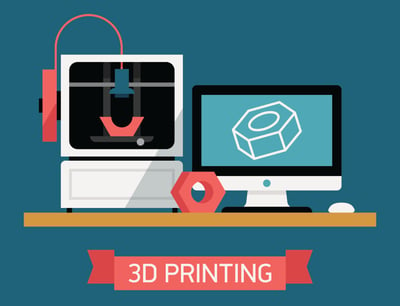
3 Factors to Consider When Offshoring Your Supply Chain
In our 2014 Industry Market Barometer survey, 68 percent of manufacturers reported reshoring as an opportunity for additional growth — meaning they’re looking to purchasing pros to keep products “Made in North America.”
Read More »
Growing Procurement Engagement and Employment
I have the coolest job, and no one knows it.
As the director of Profit Improvement & Procurement at Hudson's Bay Company (Saks Fifth Avenue, Hudson's Bay, Lord & Taylor, Home Outfitters), a lot of people — from merchandising to asset protection — come to my office. When we chat about what procurement team does and accomplishes, the other teams are blown away.
Read More »
How 3D Printing Will Impact the Supply Chain
For decades, manufacturers have used 3D printers for prototyping and small run custom items — so we’re all aware that additive manufacturing is more innovative and useful than making 3D printed selfies.
Read More »
What new purchasing agents should know about buying custom parts
Whether you are an Industrial Purchasing Manager, Procurement Professional or Supply Manager, the role of vetting out and selecting vendors has changed greatly over the last decade.
Read More »
How Manufacturers Can Improve Lead Time? Ask These Questions
Whenever a buyer purchases a product, whether it be industrial, wholesale, or over-the-counter, one of the most important factors is lead time.
The fastest manufacturing and delivery services are always in high demand, and leaders from all levels of business are interested in providing faster lead times. It can be tricky, though, when your company is a distributor.
A manufacturer can always implement lean manufacturing methods to increase lead times, but what if your business relies on other manufacturers to provide products for customers?
Read More »
Why Aren’t Your Site Visitors Submitting RFQs?
Wouldn’t it be frustrating if qualified visitors were coming to your website, but few, if any, of them were actually converting to leads? If you’re not providing the right information that buyers are looking for, you may be in that very situation without even knowing it — after all, no one’s sticking around to waste time telling you why they’re leaving.
Read More »
How the Internet of Things Can Change Your Shop
Whatever you call it — the internet of things, the cloud, the “smart grid” — it’s all about connectivity, access, and efficiency. So what exactly is it? The internet of things, as we’ll refer to it, is a series of interconnected “smart devices.”
Have you heard of the Nest thermostat? That’s an example of a smart device: not only can you control it remotely, say, from your phone, but it also uses sensors to adjust the temperature based on whether you’re home or not, and from there it actually “learns” how to heat and cool your house optimally based on your schedule and other factors.
Read More »
What Procurement Managers Must Understand About Industrial Suppliers
Industrial suppliers are not mind readers. Shocking, I know!
Yet each day they are pressed into service to determine exactly what a buyer needs with sparingly little information. They do their best to provide specs of their parts, CAD files, dimensional data, performance curves, videos, comparison tables, machine lists, and capability descriptions but the procurement teams always have unanswered questions.
As an industrial buyer, it is your job to bring the clearest questions possible. Here are a few facts to have on hand before contacting a supplier:
Read More »
Four Good Reasons To Reshore Your Supply Chain
Reshoring your supply chain means you decrease your dependence on countries in other parts of the world. For example, if you’re building an automobile, you might assemble it in America, but if the bolts for the engine come from China, you’ll have to wait for them to ship across the Pacific Ocean. This could result in disruptions to your production schedule.
And, with production so far away, how could you ensure that the quality is up to par? If this isn’t enough reason to reshore your supply chain, here are four more:
Read More »




